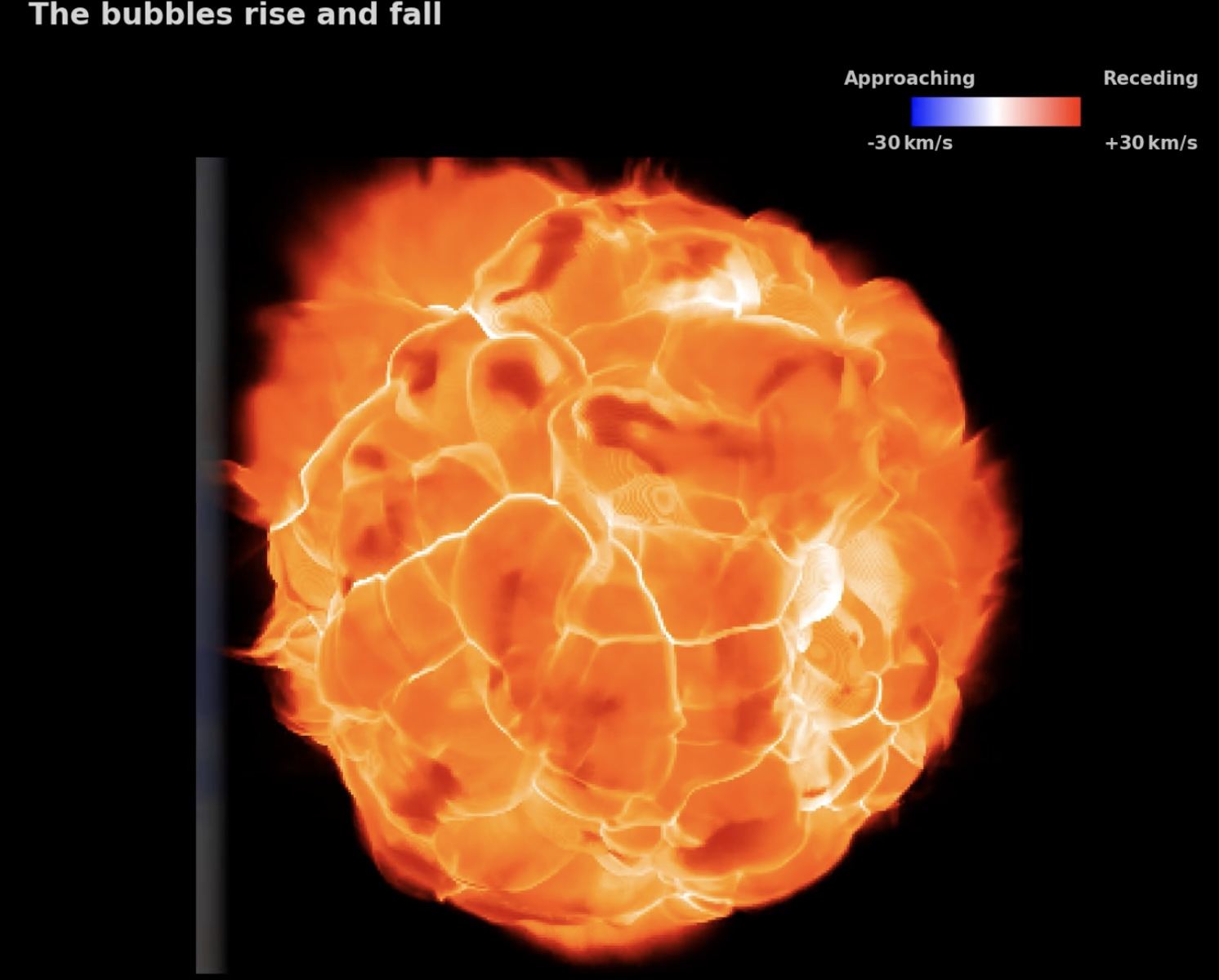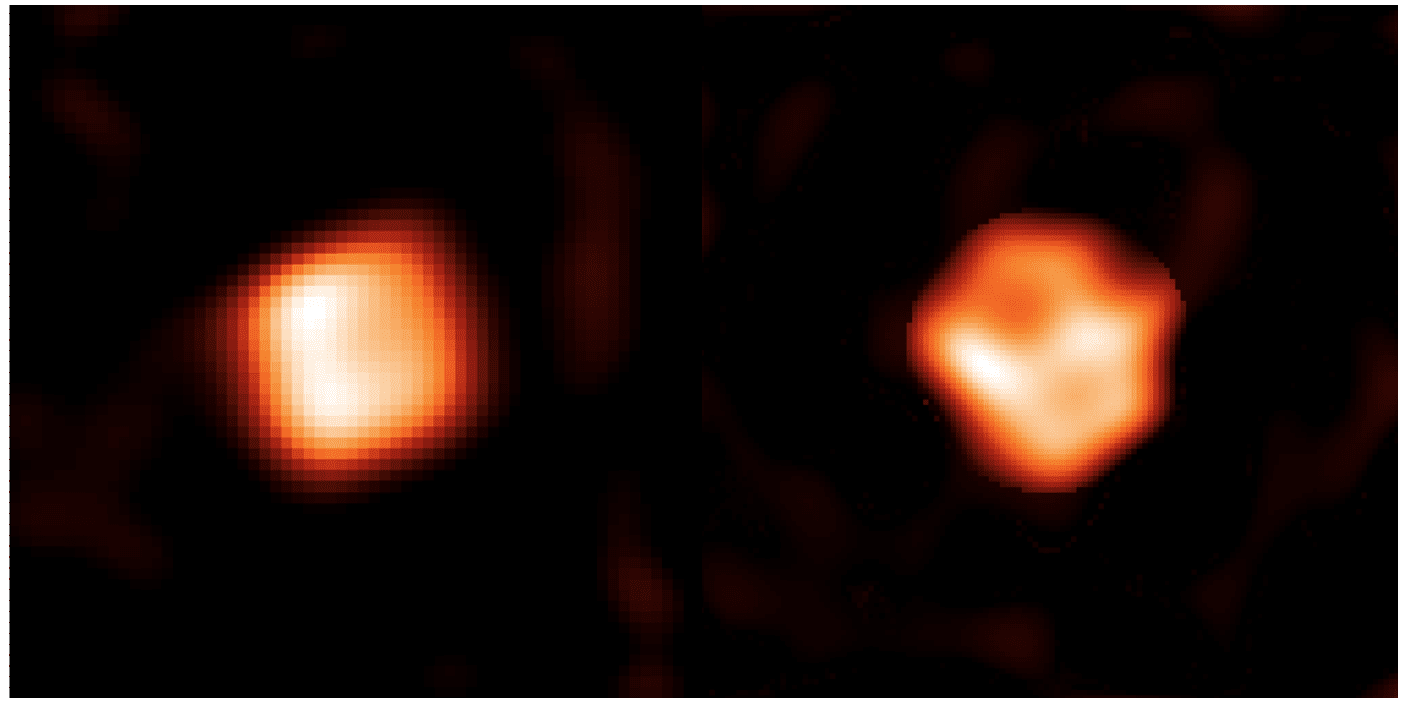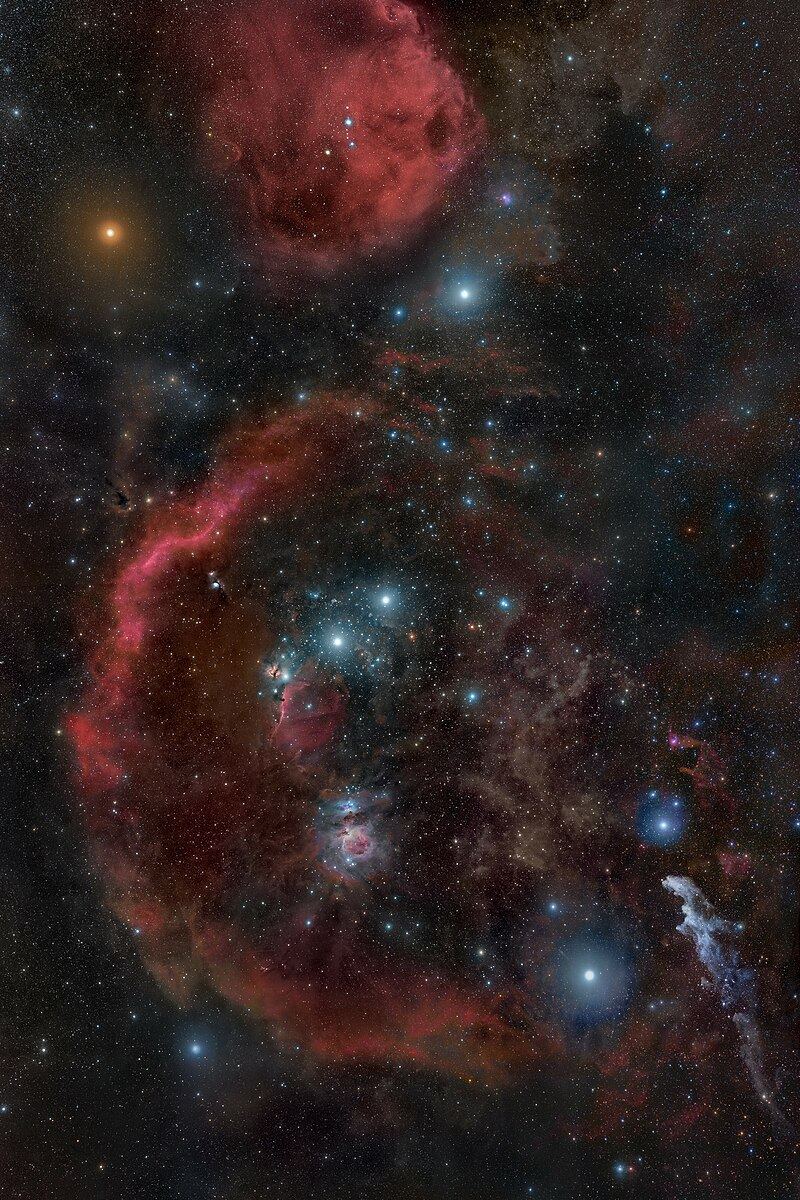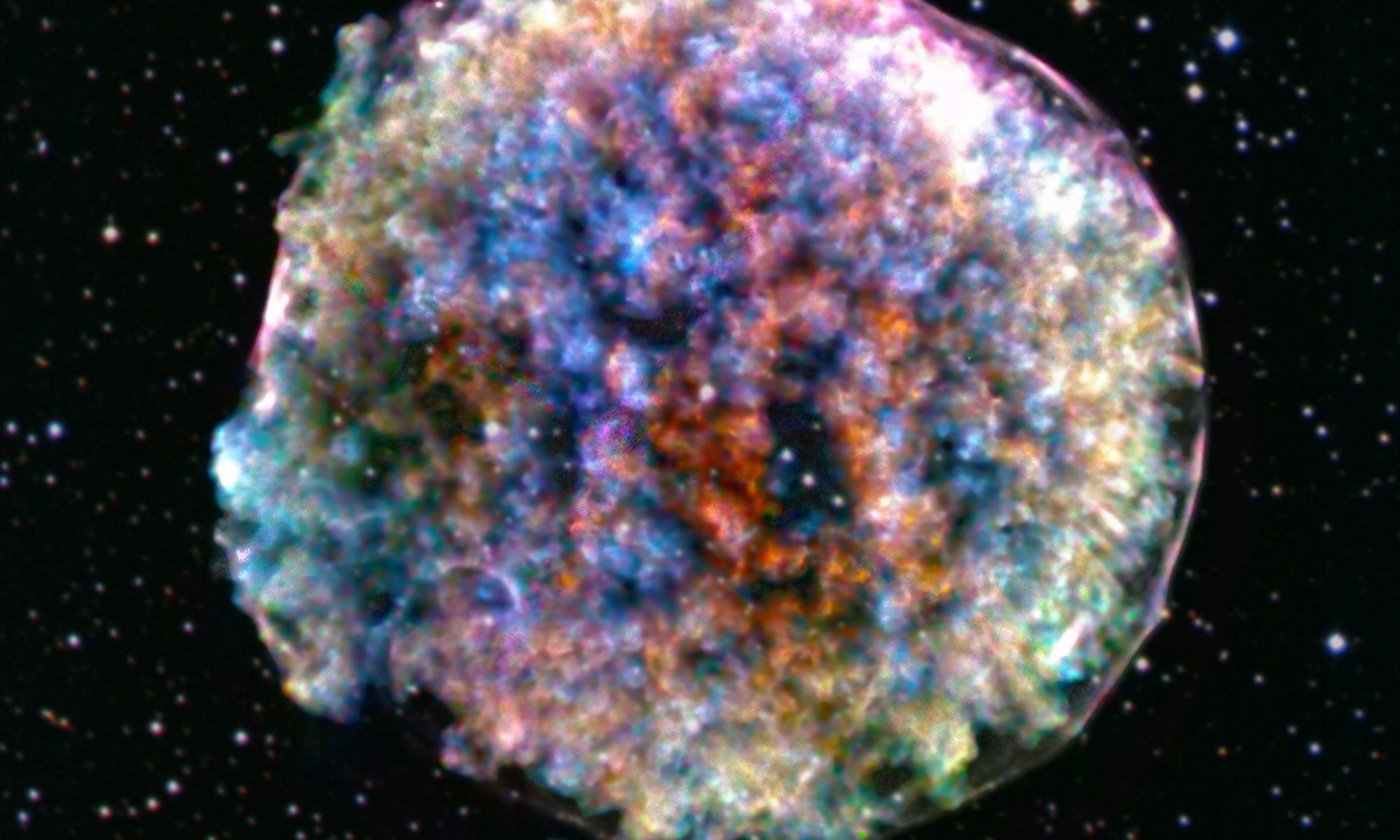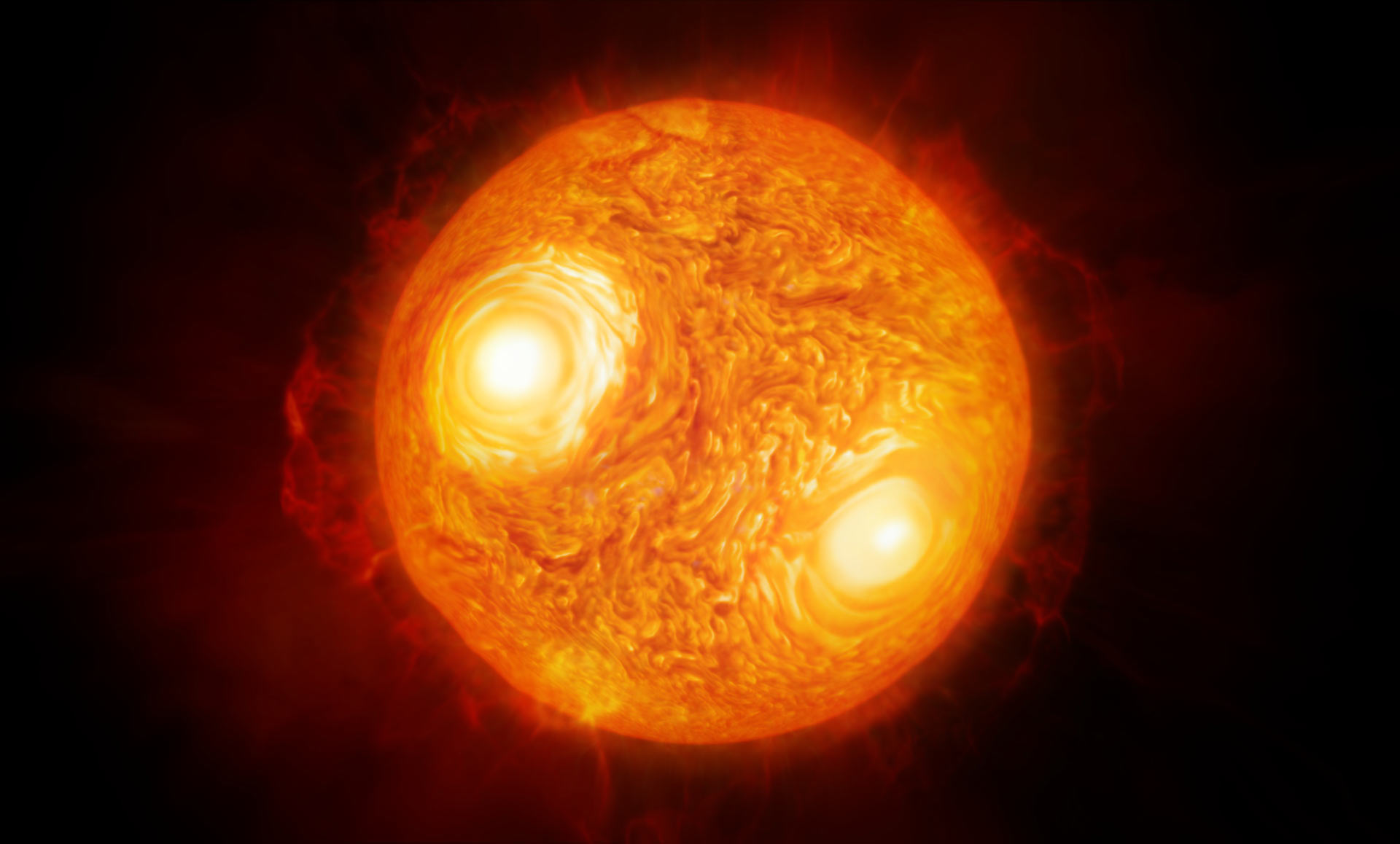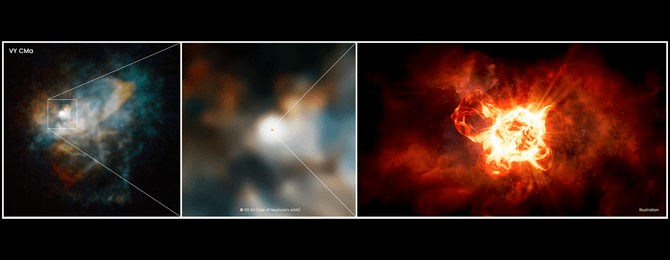Betel-gurz or Beetle-juice has been a favourite among amateur astronomers for many years. However you pronounce it, its unexpected dimming draw even more attention to this red supergiant variable star in Orion. It has a few cycles of variability, one of them occurs over a 2,170 day period, 5 times longer than its normal pulsation period. A paper has just been published that suggests a companion star of 1.17 solar masses could be the cause. It would need an orbit about 2.43 times the radius of Betelgeuse and it might just lead to the modulation of dust in the region that causes the variations we see.
Continue reading “Is Betelgeuse Actually a Binary Star?”Is Betelgeuse Actually a Binary Star?



